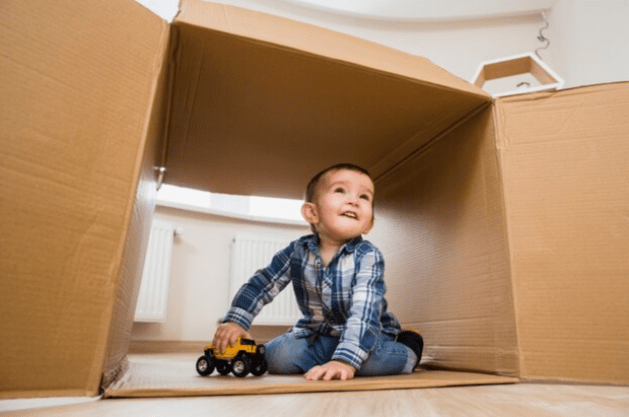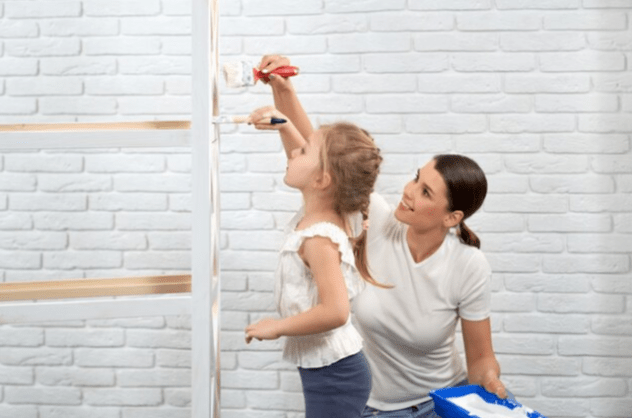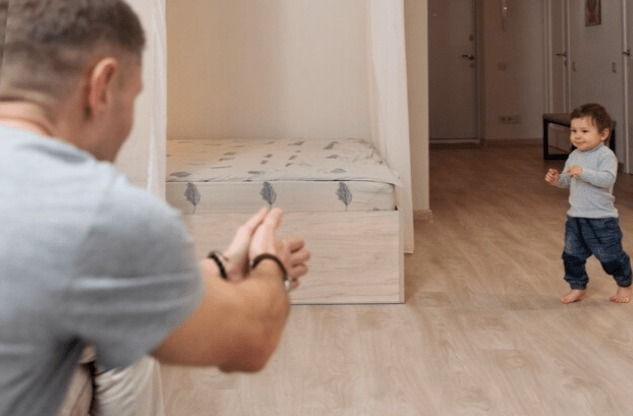With our thorough and user-friendly guide, you can learn how to effectively childproofing home and protect the safety of your children.
Overview
For children’s safety and well-being, a home must be childproofed. It entails making necessary adjustments to your house to shield kids from possible dangers and provide a secure space for their exploration and development. This article explores all the facets and actions required to childproof a house successfully. Every tactic, from protecting kitchens and bathrooms to utilizing electrical outlet covers and strapping large furniture, aims to reduce risks. The handbook also stresses the significance of continual modifications as kids develop and their skills alter. By being proactive, parents and guardians can establish a safe environment free from the constant threat of common household hazards, allowing their children to grow and learn. Childproofing home is an ongoing process of adaptation and care to ensure the house remains a secure place for young children to explore and learn.
Recognizing the Need for Childproofing home Measures

Knowing why childproofing is essential is the first step in the process. Youngsters, particularly toddlers, are naturally curious and frequently unaware of the risks around them. Everyday household objects and structures can present serious threats, from electrical outlets and sharp corners to staircases and reachable cupboards. Childproofing aims to reduce these hazards by adjusting the surroundings to the child’s degree of exploration.
Conduct a Risk Assessment first
Start by crawling about your house to get a child’s worldview. Recognize potential risks such as dangling cords, jagged edges, and ingestible materials. This comprehensive room-by-room evaluation should include every area the youngster has access to.
Safeguarding TVs and Furniture
TVs and furniture can topple over and result in catastrophic injuries—Mount large appliances and furniture to the wall with straps, braces, or brackets. Ensure they are fastened firmly or wall-mounted to stop televisions from tumbling over.
Electrical Security
Children are drawn to electrical outlets, but there are significant risks involved. Use outlet covers to block access and prevent little children from inserting things to avoid mishaps. To reduce the risk of tripping and tugging, ensure all electrical cords are out of reach and firmly fastened. Children’s safety in the home can be significantly improved by taking these easy measures.
Safety of Windows and Doors
Doors and windows can be both pinch points and escape routes. Install stops and window guards to stop people from falling out of windows. To keep kids out of dangerous places, use door locks and knob coverings. Remember that blinds and curtains can have cords that could strangle someone.
Safety in the Kitchen and Bathroom
There are many risks in bathrooms and kitchens. To prevent small hands from accessing ovens and dishwashers, use appliance locks. Keep blades and other sharp objects out of reach and lock cabinets that contain dangerous materials. To avoid scalds, use toilet locks and ensure your water heater is set to a safe temperature in the bathroom.
Avoiding Poisoning
Certain plants, pharmaceuticals, and household cleaning items might be toxic. Keep these things in cabinets that are high and have safety latches. Keep things in their original packaging whenever possible, and keep an eye out for items in your purse that should be kept out of reach of little children, including hand sanitizer or prescription drugs.
Risks of Suffocation and Choking
Certain types of bedding, small objects, and plastic bags can present a risk of suffocating or choking. Keep small objects out of reach, especially toys with small parts. Never place soft linen in a crib; ensure a youngster cannot reach plastic wrappers or bags.
Safety from fires and readiness for emergencies
Install and periodically test carbon monoxide and smoke detectors. Establish a family emergency plan and keep a fire extinguisher on hand. When kids are old, teach them to call for help and provide emergency numbers.
Monitoring and Continued Modifications
Although childproofing dramatically lowers the risks, continual supervision is still the most crucial element. Children’s skills and interests evolve as they age, so it’s essential to regularly evaluate your home to accommodate these changes.
Teaching Your Youngster
Teaching kids about safety becomes essential as they grow. Teach kids to differentiate between safe and harmful environments and encourage safe play. Together with extensive childproofing, this education creates a well-rounded safety plan. Children are protected and given knowledge that gives them confidence and a safe atmosphere to grow.
Employing a Profession
Hire a professional childproofer if you’re unsure about childproofing your house or want peace of mind. They ensure your efforts align with the most recent safety requirements by providing thorough assessments and guidance. Their knowledge can comfort you in knowing your child is safe and secure at home.
Typical Errors to Steer Clear of
Steer clear of classic childproofing home errors like presuming a child won’t be interested in something or forgetting to remove little objects that could choke them. Make sure childproofing devices are installed correctly, and periodically inspect them for damage.
Technology and the Prevention of Child Abuse

With the help of modern technology, you can childproofing home with innovative tools like camera-equipped baby monitors and applications that notify you when a cupboard or door is opened. Although these devices have their uses, physical childproofing home precautions and monitoring should still be in place in addition to these gadgets.
Legal and Rental Factors to Take into Account
Talk to your landlord about childproofing home changes if you rent. Most will consent to safety modifications, mainly if they are reversible. Keep informed of any childproofing laws or ordinances in your area, particularly if you own and operate a home daycare.
In Conclusion
Childproofing home is continuous and must be adjusted as your child develops and changes. It all comes down to balancing giving kids the freedom to explore and ensuring their surroundings are as secure as possible. You’re giving your kids a foundation that protects them from danger immediately and instills in them the value of being aware of their surroundings and comprehending the repercussions of their actions by taking the time to childproof home and teach them about safety properly. Childproofing home is an act of love, just like all other parenting elements, and it ensures that your house is a secure place for growth and exploration.
We hope you found this information helpful in your journey to create a safer environment for your family. At GuardWell Safety, we understand that every home is unique, and so are your child-proofing needs. That’s why we offer a Free Child-Proofing Consultation tailored to your specific requirements. Let our experts help you identify potential hazards and provide personalized solutions to make your home a secure haven for your little ones. Book your free consultation today and take the first step towards peace of mind.






